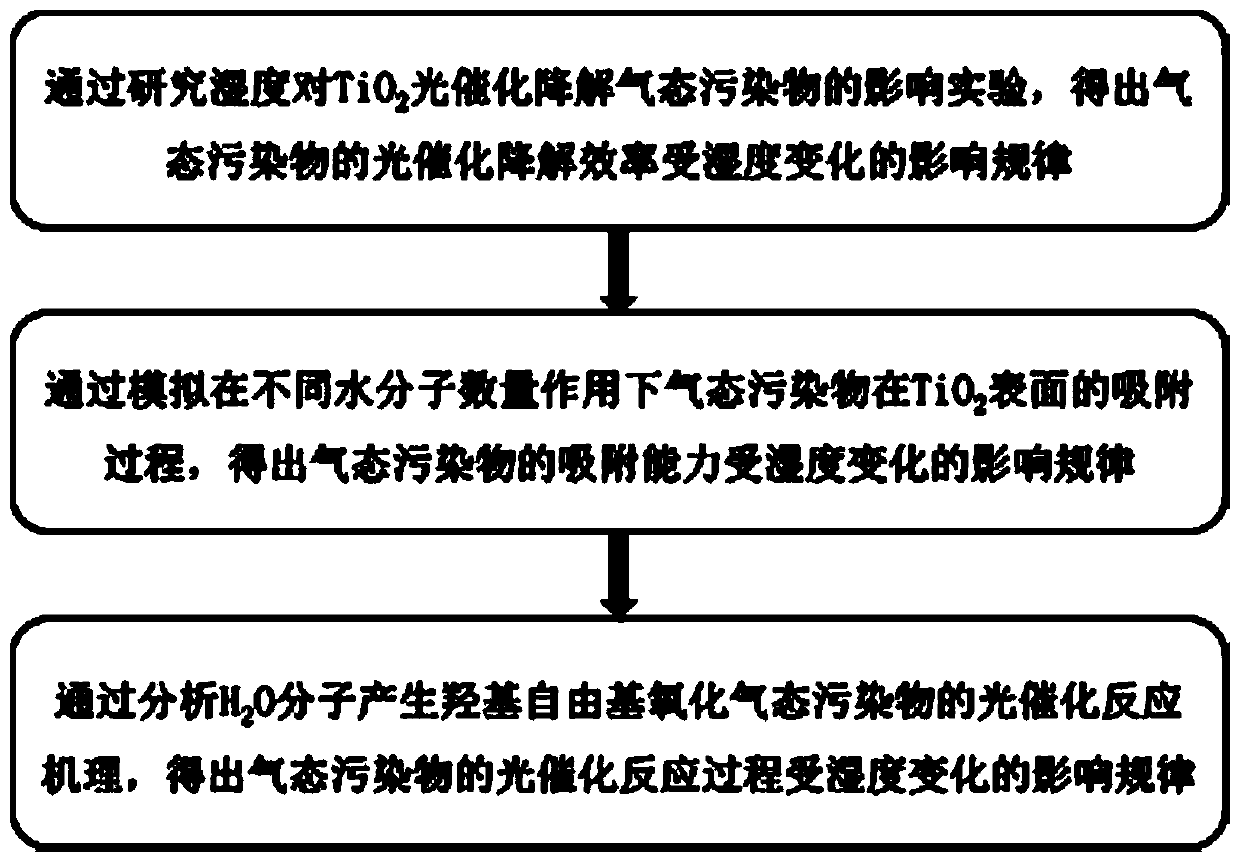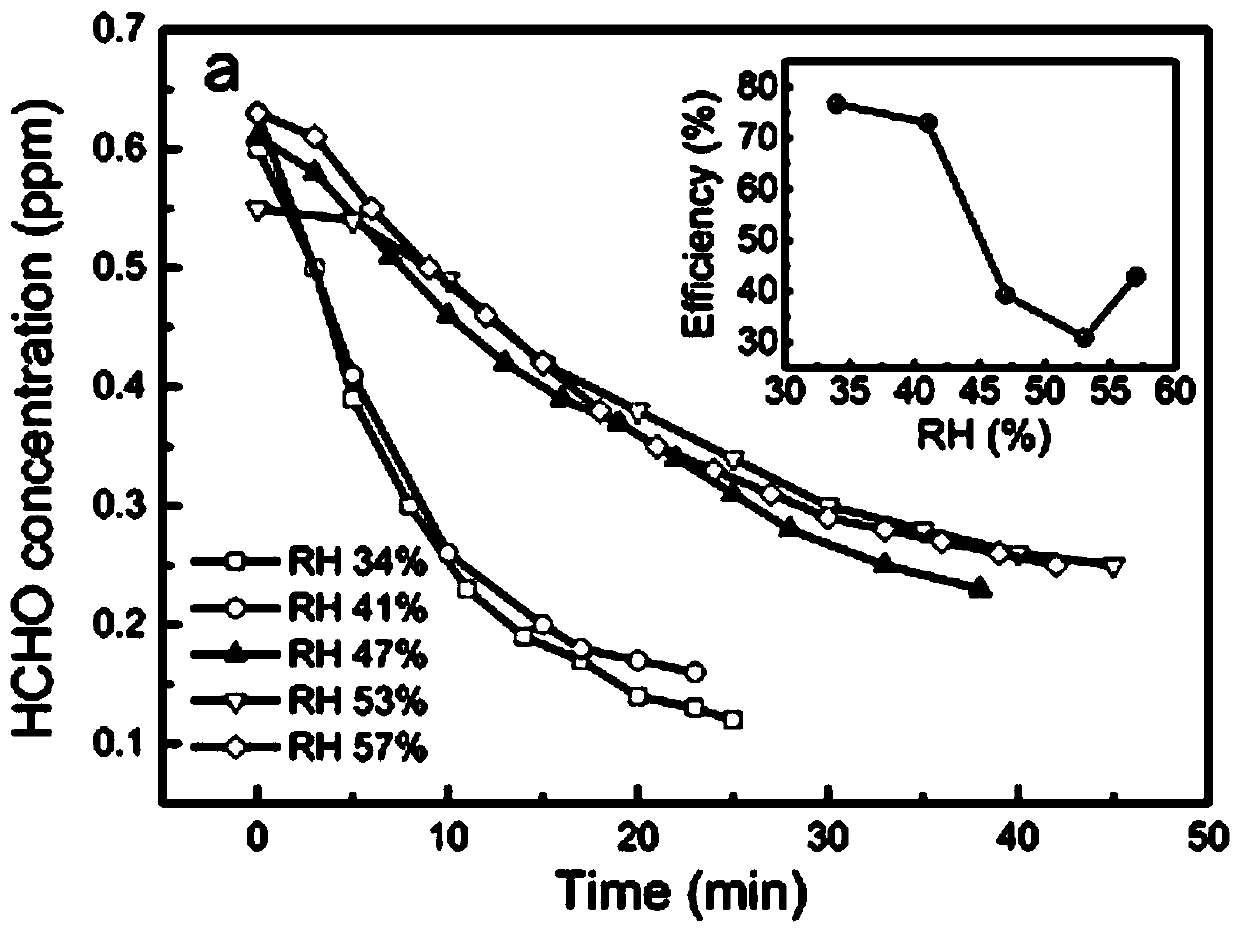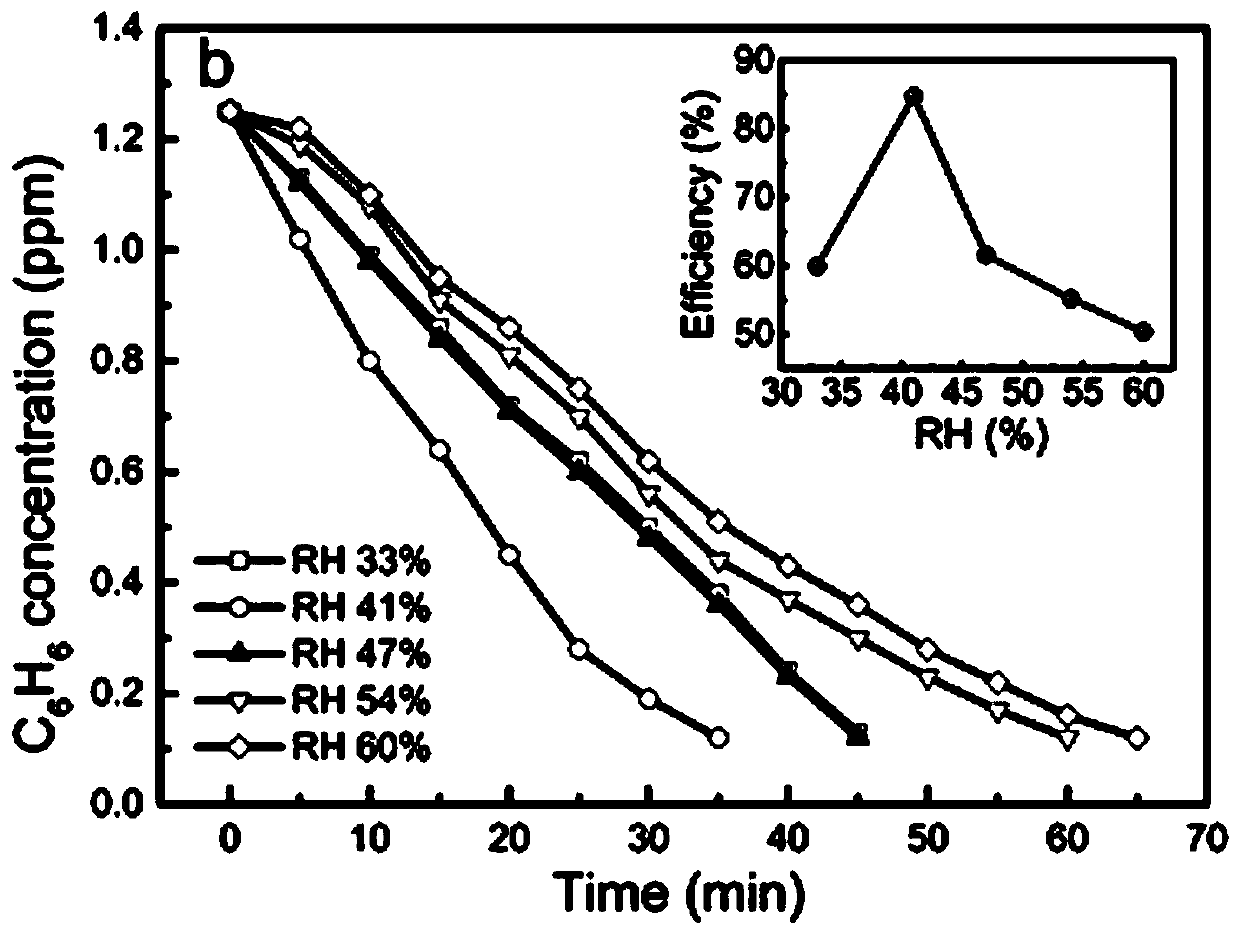Method for revealing mechanism of influence of humidity on polluted gases in TiO2 photocatalytic degradation
A technology of polluting gas and photocatalysis, which is applied in the field of environmental protection and can solve the problems of lack of research on essential scientific principles
- Summary
- Abstract
- Description
- Claims
- Application Information
AI Technical Summary
Problems solved by technology
Method used
Image
Examples
Embodiment 1
[0046] This example provides a method based on adsorption simulations and catalytic mechanisms to reveal the effect of humidity on TiO 2 The method for photocatalytic degradation of polluting gas mechanism specifically comprises the following steps:
[0047] Step 1. By studying the effect of humidity on TiO 2 The influence experiment of photocatalytic degradation of HCHO shows that the photocatalytic degradation efficiency of HCHO is affected by the change of humidity;
[0048] Extract gaseous HCHO with an initial concentration of 1.0±0.5ppm from the headspace of the HCHO solution bottle and inject it into the 2 colloidal photocatalytic system in which TiO 2 The solid content of the colloid is 30wt%, and the average particle diameter is 10nm. The ambient humidity range is adjusted to 33-60% by a humidifier, and the ambient temperature is controlled at about 30°C. Under different humidity, turn on the ultraviolet lamp, start the photocatalytic oxidation degradation experime...
Embodiment 2
[0063] This example provides a method based on adsorption simulations and catalytic mechanisms to reveal the effect of humidity on TiO 2 The method for photocatalytic degradation of polluting gas mechanism specifically comprises the following steps:
[0064] Step 1. By studying the effect of humidity on TiO 2 Photocatalytic degradation of C 6 h 6 Influence experiment, get C 6 h 6 The law of photocatalytic degradation efficiency affected by humidity changes;
[0065] The experimental procedure is similar to that in Example 1, except that the gaseous C 6 h 6 from C 6 h 6 Headspace of the solution bottle. according to Figure 2b The results of photocatalytic experiments concluded that in the range of 33-60% ambient humidity, with the increase of humidity, TiO 2 Photocatalytic degradation of C 6 h 6 It is promoted first and then inhibited, and the optimum humidity is 40%.
[0066] Step 2. By simulating C under the action of different numbers of water molecules 6 h ...
Embodiment 3
[0073] This example provides a method based on adsorption simulations and catalytic mechanisms to reveal the effect of humidity on TiO 2 The method for photocatalytic degradation of polluting gas mechanism specifically comprises the following steps:
[0074] Step 1. By studying the effect of humidity on TiO 2 Photocatalytic degradation of H 2 The influence experiment of S, draws H 2 The influence of humidity change on the photocatalytic degradation efficiency of S
[0075] The experimental procedure is similar to that in Example 1, except that gaseous H 2 S derived from H 2 S, N 2 Calibrate the gas distribution system connected to the gas cylinder. according to Figure 2c The results of photocatalytic experiments concluded that in the range of 33-60% ambient humidity, with the increase of humidity, TiO 2 Photocatalytic degradation of H 2 S is promoted.
[0076] Step 2. By simulating H under the action of different numbers of water molecules 2 S on TiO 2 adsorption ...
PUM
| Property | Measurement | Unit |
|---|---|---|
| adsorption capacity | aaaaa | aaaaa |
Abstract
Description
Claims
Application Information
 Login to View More
Login to View More - R&D
- Intellectual Property
- Life Sciences
- Materials
- Tech Scout
- Unparalleled Data Quality
- Higher Quality Content
- 60% Fewer Hallucinations
Browse by: Latest US Patents, China's latest patents, Technical Efficacy Thesaurus, Application Domain, Technology Topic, Popular Technical Reports.
© 2025 PatSnap. All rights reserved.Legal|Privacy policy|Modern Slavery Act Transparency Statement|Sitemap|About US| Contact US: help@patsnap.com



